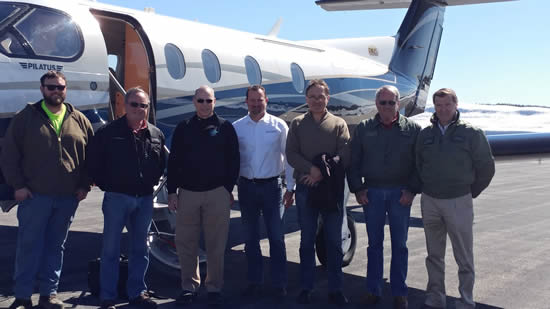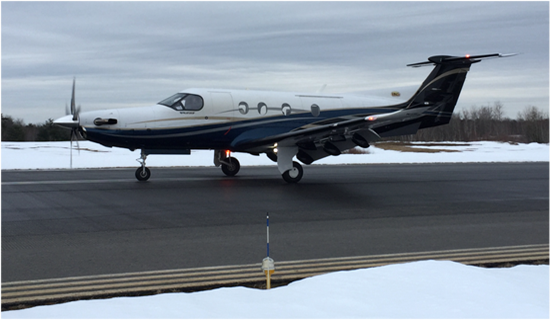|
Tulsa, Oklahoma-headquartered Advent Aircraft
Systems, Inc. has successfully completed FAA flight testing of its eABStm
anti-skid braking system for the PC-12 series.
Once the STC is issued, it will mark the first
time an anti-skid system will be available for the aircraft. The Advent eABS is
currently certified for the Eclipse EA500/550, King Air B300, Textron Aviation
Defense T-6B/C, with the King Air B200 pending.
Company flight tests were conducted at Sanford
Seacoast Regional Airport, Sanford, ME (KSFM) on Sunday March 26th, followed by
formal FAA flight tests on Thursday March 30th.
Peter Simpson,
pilot in command for the FAA flight test, said “the new stopping performance of
the airplane was remarkable and exceeded expectations, with excellent
directional control throughout all test events. The technology of the system
integrates perfectly with the PC-12.”
 |
|
Flight test crew at KSFM after FAA testing
successfully completed. (L to R): Adam Taylor, Shaw Bros Construction,
water truck driver; Ron Roberts, President of Advent and inventor
of the eABS; Mark Anderson, Test Pilot DER representing the FAA:
Jeremy Kenyon, Advent applications/flight test engineer; Peter
Simpson, aircraft PIC; Rick Roberts, Advent flight test
support; Ken Goldsmith, Advent Managing Director. |
During the FAA tests, an average 24% reduction
in all stopping distances was recorded, with landing rolls reduced an average of
26%, while maximum takeoff weight accelerate-stopping was reduced an average of
19%. The tests were conducted on both dry and wet runway conditions. By
regulation, all tests were performed without the use of reverse thrust and
compared to the Aircraft Flight Manual (AFM) distances for the day’s conditions.
 |
|
STC PC-12 during medium weight wet landing
test at KSFM. |
A total of sixteen hard braking events were
performed at light, medium, heavy and maximum weight conditions over the two
days of company and FAA flight tests. Events consisted of six landings and two
accelerate-stops on each day. All events were performed using the same single
set of tires and brakes, with negligible wear.
Reduction in maximum weight accelerate-stop
distances equated to 620 feet in dry conditions and 520 feet in wet conditions,
introducing a substantial new safety margin for operators in case of an aborted
takeoff. The landing roll reductions and reduced risk at all weights offer the
PC-12 operator an alternative or complement to the use of reverse thrust,
particularly at lighter aircraft weights where the risk of damaging tires can be
highest for airplanes not equipped with anti-skid brakes.
For certification purposes, Advent only had to
demonstrate to the FAA the safe operation of the systems and that stopping
distances for the PC-12 with the eABS installed were no worse than existing AFM
values. However, subject to customer demand, Advent would consider seeking FAA
approval for a revision to the AFM to incorporate the reduced stopping distances
demonstrated during testing.
Advent anticipates the STC to be issued in
April, with first customer input scheduled at Pilatus authorized service center
ProStar Aviation in mid-April.
The Advent eABS for the PC-12 series may be
ordered through most Pilatus authorized service centers or operators may contact
Tom Grunbeck, Advent VP-Marketing and Sales, (203) 233-4262, for further
information.
|

